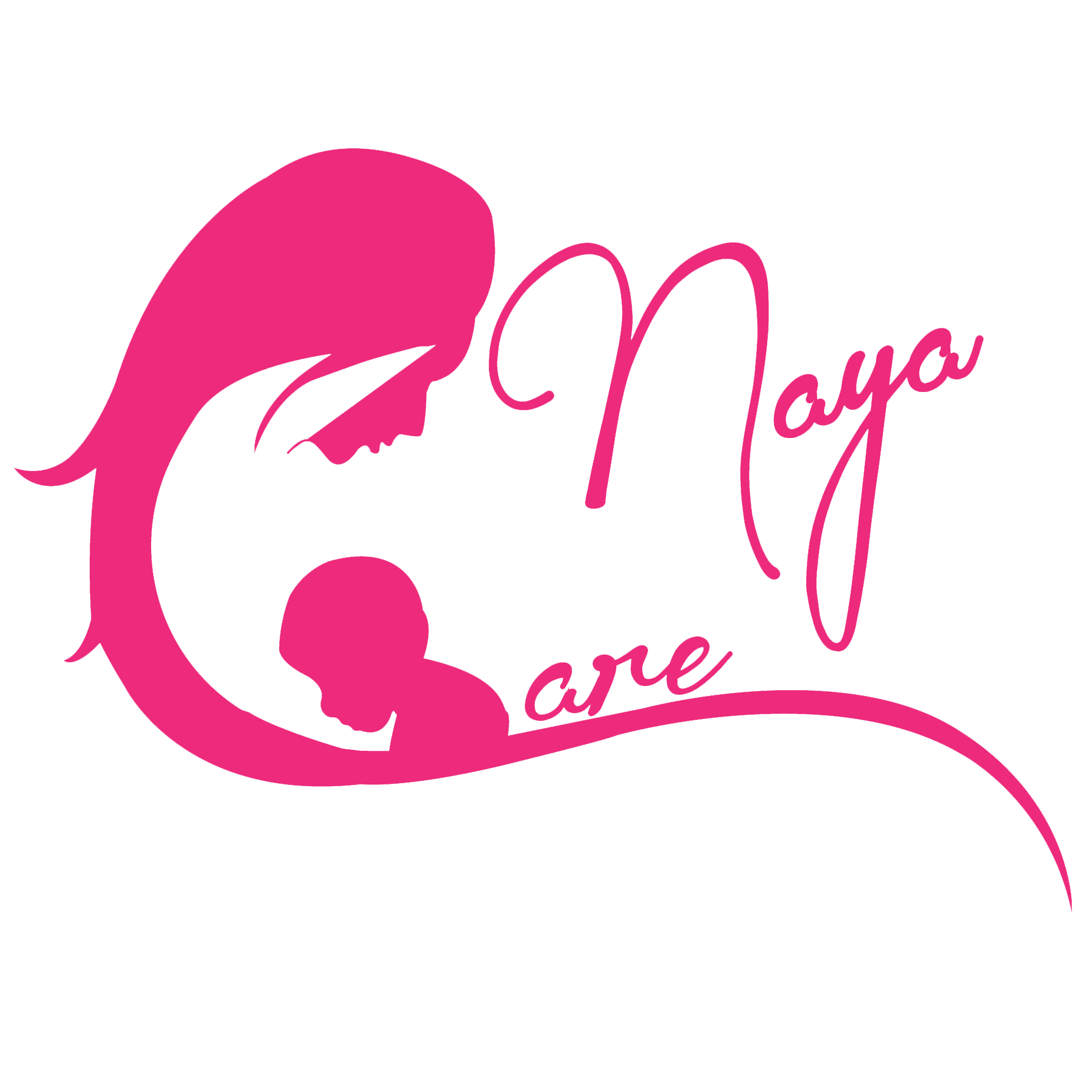
by Sonal Patel | May 18, 2023 | Blog
A new baby is a big deal for a family, and it presents many difficulties, especially for new mothers. However, medical in-home postpartum visits are beneficial and necessary for a new mother’s physical, mental, and social well-being. This blog post will cover the advantages of medical in-home postpartum visits from a personal, social, and financial perspective. We’ll also talk about how to get postpartum medical visits at home.
Benefits to Individuals of Postpartum Medical Home Visits
For new mothers, postpartum medical home visits have a number of personal benefits. With these visits, it is ensured that new moms receive the proper medical attention as well as support for their physical and mental health. Individual benefits of medical in-home postpartum visits include the following.
Proper medical care and support
Postpartum visits ensure that new mothers receive the correct medical attention and support. It contributes to the mother’s successful recovery and the rapid resolution of any medical problems.
Keeping an eye out for postpartum depression
Many new mothers experience postpartum depression, which can have serious repercussions. Postpartum checkups offer the chance to check for postpartum depression and, if necessary, to offer the required support and management.
Support for breastfeeding
For new mothers, postpartum medical home visits have various positive interpersonal effects. These appointments allow expectant moms to speak with a doctor and get assistance with their mental and social well-being. Medical in-home postpartum visits have the following interpersonal benefits:
Monitoring for postpartum depression
Postpartum visits provide new mothers a chance to get help emotionally. The doctor can offer the direction and encouragement you need to deal with the emotional difficulties of parenthood.
Social Support
Postpartum appointments give new mothers a chance to interact with a doctor and get social support. It aids new moms in overcoming the feelings of loneliness and isolation that frequently accompany parenting.
Professional advice
Postpartum visits give new mothers the chance to get professional advice. It can aid new mothers in managing the difficulties of motherhood.
Economic Benefits of Postpartum Medical Visits at Home
For new mothers, there are significant financial benefits to having medical appointments at home after delivery. These checkups give the chance to safeguard the mother and child’s health and avoid costly medical problems. The following are a few financial benefits of postpartum care provided by doctors in their homes:
Avoid costly medical problems
Postpartum appointments give the chance to avoid costly medical problems. It makes sure that any medical problems are handled quickly, which can reduce expensive medical expenditures.
Reduce hospital readmissions
Reducing hospital readmissions can be accomplished by scheduling postpartum visits. It guarantees the health of both mother and child and ensures that any medical problems are swiftly resolved, hence minimizing the need for hospital readmissions.
Enhance the mother and child’s health
Postpartum visits can help the mother and child’s health. It makes sure that any medical problems are dealt with right away, which can reduce expensive medical expenditures and enhance both the mother’s and the child’s general health.
How to Get Postpartum Medical Visits at Home
Reach out to us for a free consultation. If we don’t service your area, check out The Center for 4th Trimester Care (c4tc.co) for a list of physicians conducting home visits around the country.
Read more about these benefits in The Doctor and Her Black Bag: How Old Fashion Care Tackles Maternal Mortality and Benefits America’s Economy.

by Sonal Patel | May 18, 2023 | Blog
In addition to being a natural and healthful way to feed infants, breastfeeding provides considerable financial advantages. According to studies, breastfeeding can lower healthcare costs by reducing risk of diseases in mom and newborns. However, despite the benefits of nursing, many women encounter obstacles that make it challenging to do so. In this blog post, we’ll talk about breastfeeding’s advantages for health and the economy, as well as its drawbacks and the necessity of societal pillars for encouraging women to breastfeed.
The Advantages of Breastfeeding for Health
Various minerals and other bioactive components found in breast milk offer protection from infectious and non-communicable diseases. Breastfeeding has been found to lower the incidence of respiratory infections, gastrointestinal illnesses, and sudden infant death syndrome (SIDS) in infants. Furthermore, breastfeeding has been connected to better cognitive growth and a lower incidence of obesity.
For mothers, breastfeeding has been linked to a decreased risk of breast, ovarian, endometrial, and type 2 diabetes mellitus. Breastfeeding may also hasten postpartum recovery and lower the risk of postpartum depression.
The Advantages of Breastfeeding for Economy
Breastfeeding has a lot of positive economic effects in addition to health benefits. According to a study in the Journal of Pediatrics, if 90% of women nursed their kids for the recommended six months, the United States might save $13 billion annually on healthcare costs. In addition, breastfeeding can lower healthcare costs by reducing illnesses and problems like SIDS, respiratory infections, and gastrointestinal infections that need medical attention. Furthermore, breastfeeding can minimize the time parents must take off of work to care for unwell children.
For families, breastfeeding has positive financial effects as well. Formula might be pricey; however, breast milk is less costly. Costs incurred with breastfeeding include purchasing breast pumps and accessories such as bottles. However, with the passing of the Affordable Care Act, breast pumps were mandated to be covered by insurance.
The Challenges of Breastfeeding
Despite the advantages of nursing, many women encounter obstacles that make it challenging to do so. Lack of support from family and friends, inability to access lactation consultants or other services, and having to go back to work soon after giving birth are frequent obstacles to nursing. In addition, some women struggle with physical issues like painful nipples or trouble latching.
Legislation surrounding breastfeeding also causes hurdles. Until the passage of the Affordable Care Act in 2010, employers did not have to provide adequate space or breaks for pumping. Moreover, employers with under 50 employees still are not required by law to support a breastfeeding mother. Laws also vary by state. Issues associated with public breastfeeding to appropriate places to pump and store breast milk are still contingent on state. For a detailed summary around breastfeeding and laws, check out Breastfeeding State Laws.
Conclusion
Women, newborns, families, communities, and our society can profit from the health and economic benefits of breastfeeding. Although many women desire to breastfeed, they may encounter obstacles that make it challenging to do so. It is crucial to spread awareness of the advantages of breastfeeding among families, healthcare professionals, and employers. Moreover, it is necessary to work to foster an atmosphere that supports and promotes breastfeeding. By eliminating breastfeeding barriers, we all can benefit from its wealth of health and economic advantages.
References
https://www.uptodate.com/contents/maternal-and-economic-benefits-of-breastfeeding#!
https://www.eatsonfeetsresources.org/wp-content/uploads/2022/07/EconomicsofBF.pdf
https://www.healthline.com/health/breastfeeding/11-benefits-of-breastfeeding
Want more? Download a free copy of Dr. Sonal Patel’s bestseller, The Doctor & Her Black Bag: How old fashioned care tackles maternal mortality and benefits America’s economy.

by Sonal Patel | Feb 8, 2023 | Blog
The 4th trimester is a critical time for mothers and families as they navigate the postpartum period. It is important to understand the physical, emotional, and psychological changes that occur during this time, and to provide the necessary support to ensure the best possible outcomes for both mothers and their families. By nurturing the mother, families can reap many benefits that will contribute to their overall health and well-being.
- Improved Mental Health: After giving birth, mothers are at a higher risk for depression and anxiety. It is important to support mothers during this time by providing a safe and supportive environment. This can include offering practical help, such as meal preparation, household chores, and baby care, as well as emotional support, such as active listening and empathy. When mothers feel supported and valued, they are more likely to have better mental health outcomes.
- Better Physical Health: The physical demands of motherhood can be intense, and it is important to provide the necessary support to ensure that mothers are able to recover from childbirth and return to optimal health. This can include providing adequate rest and sleep, nourishing meals, and help with physical tasks. By nurturing the mother, families can help ensure that she has the energy and resources to care for herself and her family.
- Increased Bonding and Attachment: The 4th trimester is a critical time for bonding and attachment between mothers and their infants. By nurturing the mother, families can help create an environment that is conducive to this bonding process. This can include providing opportunities for skin-to-skin contact, offering emotional support, and helping to ensure that mothers have the time and energy to engage in meaningful interactions with their infants.
- Better Family Relationships: The postpartum period can bring about changes in family relationships. By nurturing the mother, families can help to ensure that these changes are positive and that relationships remain strong. This can include providing emotional support, offering practical help, and promoting open and honest communication.
- Improved Child Development: The first year of life is a critical time for children’s development, and mothers play a crucial role in this process. By nurturing the mother, families can help ensure that children receive the best possible start in life. This can include providing a safe and supportive environment, offering emotional support, and promoting positive parent-child interactions.
As you can see, nurturing the mother during the 4th trimester is critical for the health and well-being of both mothers and their families. By providing the necessary support, families can ensure that mothers have the resources and energy to care for themselves and their families, and that children receive the best possible start in life. Whether it’s through emotional support, practical help, or simply promoting a safe and supportive environment, nurturing the mother will have many benefits that will contribute to the overall health and well-being of the family. By acknowledging and supporting mothers during the 4th trimester, we can improve outcomes for mothers, fathers, and children.

by Sonal Patel | Feb 8, 2023 | Blog
The 4th trimester is a critical time for mothers as they navigate the physical, emotional, and psychological changes that come with the postpartum period. During this time, it is important to understand the different types of postpartum mood disorders that can occur and provide the necessary support and resources to ensure the best possible outcomes for both mothers and their families. In this blog, we will explore the difference between postpartum blues, postpartum mood disorders (postpartum depression, postpartum anxiety), and postpartum psychosis.
- Postpartum Blues: Postpartum blues is a common experience for many mothers and is characterized by mild to moderate feelings of sadness, anxiety, irritability, and fatigue. These symptoms typically occur in the first two weeks after childbirth and are caused by hormonal changes, fatigue, and the stress of adjusting to life with a new baby. While postpartum blues can be distressing, it is usually a temporary condition that resolves on its own within a few weeks.
- Postpartum Mood Disorders: Postpartum mood disorders include postpartum depression and postpartum anxiety and are more severe and longer-lasting than postpartum blues. Postpartum depression is characterized by persistent feelings of sadness, hopelessness, and a loss of interest in activities that were once enjoyed. Postpartum anxiety is characterized by persistent feelings of worry, fear, and nervousness. These conditions can be severe and can impact a mother’s ability to care for herself and her baby.
- Postpartum Psychosis: Postpartum psychosis is a rare but severe mental illness that can occur in the postpartum period. It is characterized by symptoms such as delusions, hallucinations, manic behavior, and psychosis. Postpartum psychosis is a medical emergency and requires immediate treatment.
It is important to recognize that these conditions can occur in any mother, regardless of her background or prior mental health history. Moreover, it is important to understand that these conditions are treatable and that there are effective treatments available, such as therapy, medication, and support groups.
Want more? Download a free copy of Dr. Sonal Patel’s bestseller, The Doctor & Her Black Bag: How old fashioned care tackles maternal mortality and benefits America’s economy.

by Sonal Patel | Feb 8, 2023 | Blog
Reasons Why Pelvic Physical Therapy Should Be Part of the 4th Trimester
by Sonal Patel | Feb 8, 2023 | Blog | 0 comments
The 4th trimester is a crucial time for mothers as they navigate the physical, emotional, and psychological changes that come with the postpartum period. During this time, providing the necessary support and resources is important to ensure the best possible outcomes for both mothers and their families. One of these resources is pelvic physical therapy,crucial also known as pelvic floor therapy, which can help to alleviate pain, improve function, and promote healing after childbirth. In this blog, we will explore the reasons why pelvic physical therapy should be part of the 4th trimester for all mothers.
- Alleviates Pain: Childbirth can be a physically demanding experience and can lead to pain and discomfort in the pelvic region. Pelvic physical therapy can help to alleviate this pain by addressing the underlying causes, such as muscle imbalances, weakened muscles, and joint restrictions. Through a combination of manual therapy techniques and exercise, pelvic physical therapy can help to reduce pain and improve function.
- Improves Function: The pelvic region is composed of many different muscles and joints, and childbirth can cause these structures to become imbalanced or weakened. Pelvic physical therapy can help to restore function by addressing these imbalances and promoting healing. This can help to improve physical function, such as walking, standing, and sitting, and reduce the risk of future pelvic pain and discomfort.
- Promotes Healing: Childbirth can cause injury and trauma to the pelvic region, and it is important to provide the necessary support to promote healing. Pelvic physical therapy can help to facilitate the healing process by addressing any physical impairments and promoting proper alignment and function. This can help to prevent future pain and discomfort, and reduce the risk of long-term complications.
- Enhances Recovery: The postpartum period is a critical time for mothers to focus on their own recovery and well-being. Pelvic physical therapy can enhance this recovery by addressing any physical impairments and promoting optimal function by restoring pelvic floor muscles. This can help mothers to feel their best and be at their best as they care for themselves and their families.
- Prevents Future Complications: Childbirth can lead to a range of physical complications caused by pelvic floor dysfunction, including urinary incontinence, fecal incontinence, pelvic organ prolapse, and sexual dysfunction. Pelvic physical therapy can help prevent these complications by addressing physical impairments and promoting optimal function. By doing so, mothers can reduce their risk of future complications and improve their overall health and well-being.
Pelvic physical therapy is an important resource for mothers during the 4th trimester. By addressing pain, improving function, promoting healing, enhancing recovery, preventing future pelvic floor disorder, pelvic physical therapy can help mothers to feel their best and be at their best as they navigate the postpartum period. By incorporating pelvic health into the 4th trimester, mothers can receive the necessary support to ensure the best possible outcomes for themselves and their families. Whether it is through manual therapy techniques, exercise, or a combination of both, pelvic physical treatment is an essential component of the 4th trimester for all mothers. Consult with referring physicians to discuss who can refer you to a pelvic physical therapist and rehabilitation services or contact us at NayaCare, to talk about a plan that works for you. To learn more about the anatomy and physiology of pelvic therapy and what you can start doing right away in the 4th trimester, click here Postpartum Pelvic Floor 101 with Ashely Zimmerman, PT, Dpt.
Want more? Download a free copy of Dr. Sonal Patel’s bestseller, The Doctor & Her Black Bag: How old fashioned care tackles maternal mortality and benefits America’s economy old-fashioned.





